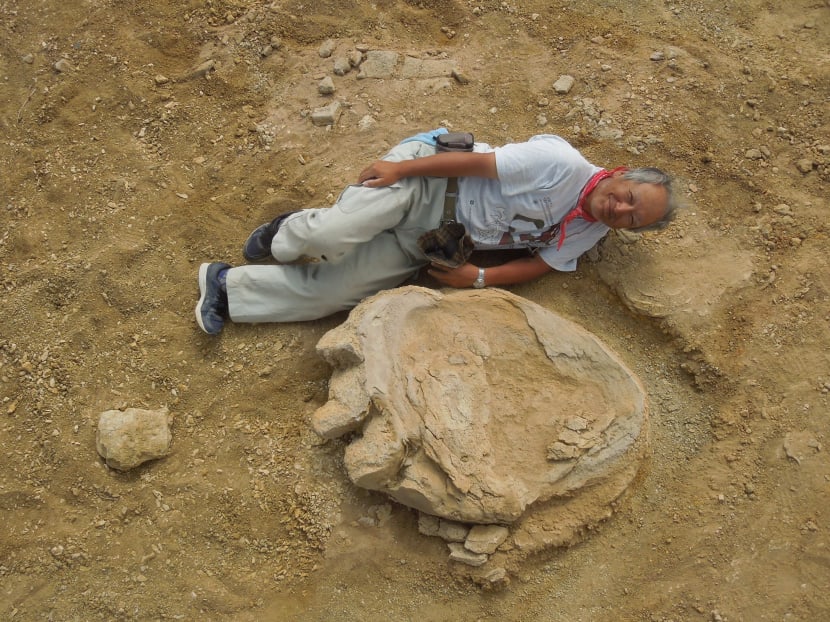Giant dinosaur footprint discovered in Mongolia desert
TOKYO — One of the biggest dinosaur footprints ever recorded has been unearthed in the Gobi Desert, researchers said Friday (Sept 30), offering a fresh clue about the giant creatures that roamed the earth millions of years ago.

This handout picture taken on August 21, 2016 and released by Okayama University of Science and Mongolian academy of sciences joint expedition on September 30 shows Okayama University of Science Professor Shinobu Ishigaki lying next to a dinosaur footprint in Gobi Desert. A Mongolia-Japan joint expedition has found four fossil footprints in a layer of earth that dates back 70-90 million years ago in Gobi Desert. Photo: AFP
TOKYO — One of the biggest dinosaur footprints ever recorded has been unearthed in the Gobi Desert, researchers said Friday (Sept 30), offering a fresh clue about the giant creatures that roamed the earth millions of years ago.
A joint Mongolian-Japanese expedition found the giant print, which measures 106cm long and 77cm wide.
One of several footprints discovered in the vast Mongolian desert, the huge fossil was discovered last month in a geologic layer formed between 70 million and 90 million years ago, researchers said.
It was naturally cast, as sand flowed into dents that had been left by the creature stomping on the once muddy ground.
The footprint is believed to have belonged to Titanosaur, a long-necked dinosaur, and could have been more than 30 m long and 20m tall, according to researchers.
“This is a very rare discovery as it’s a well-preserved fossil footprint that is more than a metre long with imprints of its claws,” said a statement issued by Okayama University of Science.
The Japanese university has been involved in the study with the Mongolian Academy of Science. AFP





